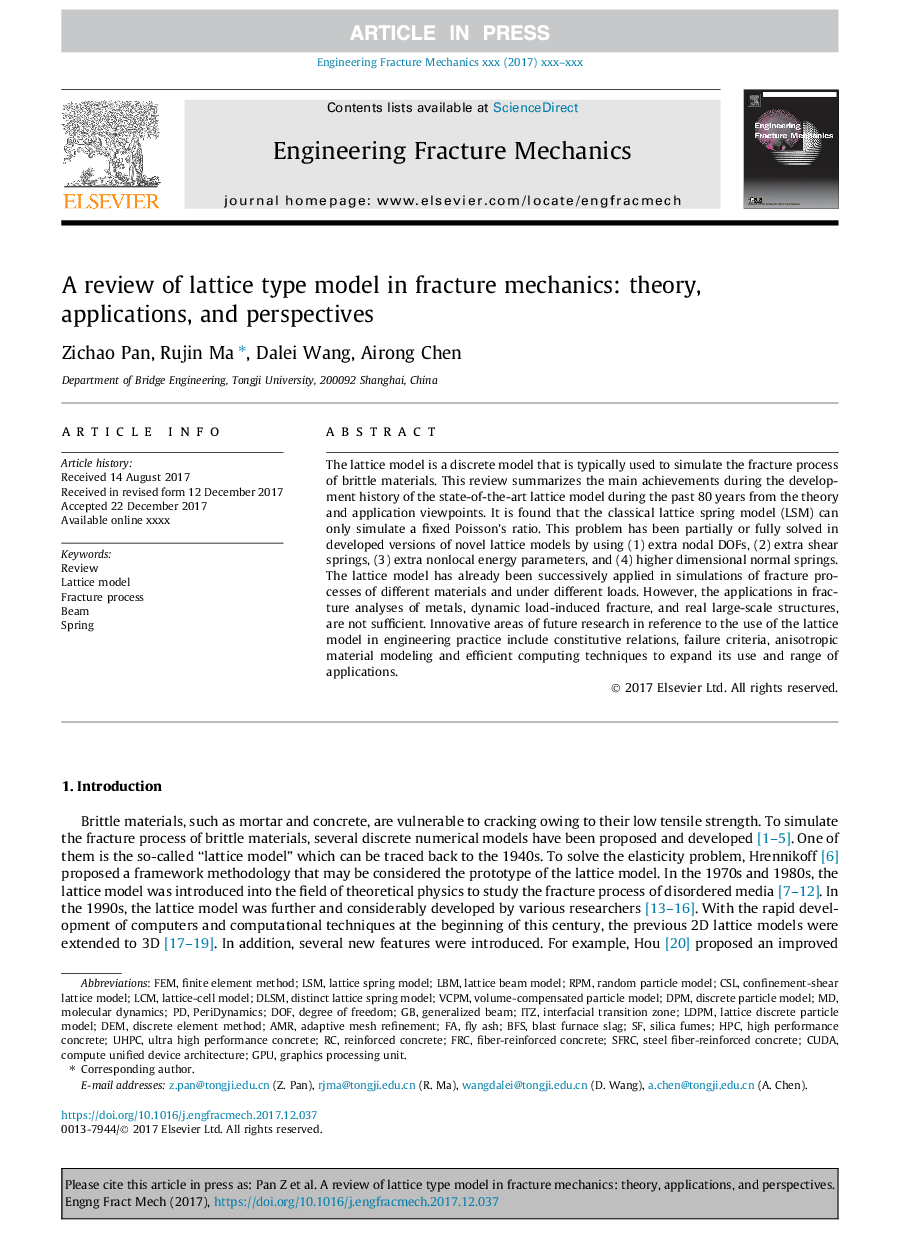| Article ID | Journal | Published Year | Pages | File Type |
|---|---|---|---|---|
| 7169110 | Engineering Fracture Mechanics | 2018 | 28 Pages |
Abstract
The lattice model is a discrete model that is typically used to simulate the fracture process of brittle materials. This review summarizes the main achievements during the development history of the state-of-the-art lattice model during the past 80â¯years from the theory and application viewpoints. It is found that the classical lattice spring model (LSM) can only simulate a fixed Poisson's ratio. This problem has been partially or fully solved in developed versions of novel lattice models by using (1) extra nodal DOFs, (2) extra shear springs, (3) extra nonlocal energy parameters, and (4) higher dimensional normal springs. The lattice model has already been successively applied in simulations of fracture processes of different materials and under different loads. However, the applications in fracture analyses of metals, dynamic load-induced fracture, and real large-scale structures, are not sufficient. Innovative areas of future research in reference to the use of the lattice model in engineering practice include constitutive relations, failure criteria, anisotropic material modeling and efficient computing techniques to expand its use and range of applications.
Keywords
UHPCDemCSLdpmDoFAMRLCMBFSLBMRPMHPCFRCITZSFRCSteel fiber-reinforced concreteHigh performance concreteUltra high performance concreteFiber-reinforced concreteReinforced concretespringFly ashMolecular dynamicsFinite element methodDiscrete element methodLSMBlast furnace slagFracture processCompute unified device architectureDistinct lattice spring modelDiscrete Particle ModelLattice Discrete Particle ModelLattice modelLattice spring modelReviewinterfacial transition zonedegree of freedomGPUGraphics Processing UnitAdaptive mesh refinementBeamPeridynamicsFEMCUDA
Related Topics
Physical Sciences and Engineering
Engineering
Mechanical Engineering
Authors
Zichao Pan, Rujin Ma, Dalei Wang, Airong Chen,
